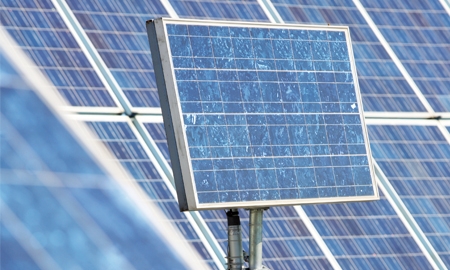Thanks to a comprehensive Electricity Industry Restructuring Plan – developed by the Electricity & Cogeneration Regulatory Authority (ECRA and SEC in conjunction with a number of domestic and international advisers, most notably Accenture and the King Fahd University of Petroleum and Minerals – the Saudi power sector is set to become more competitive in the coming years, and eventually an unbundled and liberalised sector. In addition to SEC, other companies, such as Aramco will be licensed to generate electricity.
The SWCC produces some 5,000MW of electricity (merely a tenth of the SEC’s installed capacity) but its main business is – as its name rightly suggests – the desalinisation of water. Saudi Arabia has no rivers and extremely limited water resources, but, as Dr Abdulrahman Al Ibrahim, Governor of the SWCC explains: “The government has decided to make this land into a piece of heaven and the major way to achieve that is to provide adequate and clean water supplies, in terms of quantity, in terms of quality and in terms of availability.”
To this end, SWCC sources some 47 per cent of its water from Saudi Arabia’s natural aquifers and the remaining 53 per cent from seawater. SWCC, whose production of desalinated water accounts for 18 per cent of total global output, desalinates more than 5 million cubic metres of seawater per day – primarily employing multi-stage flash distillation and reverse osmosis technologies – in what the Governor admits is a very expensive process that relies heavily on gas and liquid fuel usage.
While Saudi Arabia’s population has been steadily growing at rate of 3 per cent over the past 20 years, putting mounting pressure on energy production, demand for desalinated water has actually crept up at more than double the rate – by 6.7 per cent. This year the SWCC announced its plans to build a 600,000 cubic metre per day desalination facility, aimed at meeting the needs of Makkah, Taif and northern Jeddah. This will prove a boon to its existing 30 plants, which in total supply 3.3 million cubic metres daily.
Fortunately for the environment’s sake, through ample research and development, much of which is undertaken at the Saline Water Desalination Research Institute, the SWCC has made progress in reducing reliance on fossil fuels. By coupling one of the kingdom’s most freely available resources with the desalinisation process, SWCC has created the world’s largest solar power desalination plants.
Dr Al Ibrahim, who worked as Manager of the Solar Thermal Simulation Laboratory at King Abdulaziz City for Science and Technology back in the 1980s, highlights that in Saudi Arabia this combination is ideal. He also notes that the kingdom has successfully overcome the challenges that solar power generation generally presents: affordability, technical viability and reliability.
Over time, SWCC plans to establish several solar-powered desalination plants in places such as Haqel, Dhuba and Farasan. For the moment, it can proudly claim to run Al-Khafji, the world’s largest solar-powered seawater reverse osmosis plant, producing 30,000 cubic metres of water each day. Nevertheless, Dr Al Ibrahim says that SWCC may very well move beyond solar and explore other forms of renewable energy to power its plants.
“In a second phase, we are looking at 300,000 cubic metres per day. It might not be one plant, it may be multiple plants, but definitely we are looking very carefully at employing thermal energy, as well as natural, geothermal and wind energy. We are testing all technologies,” he says.

0 COMMENTS